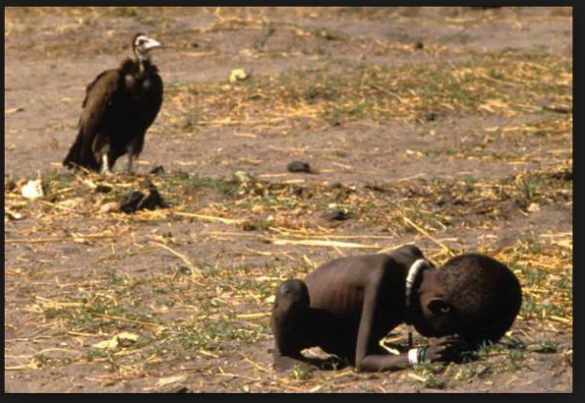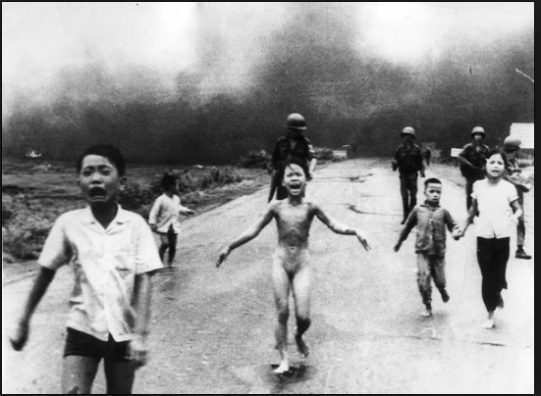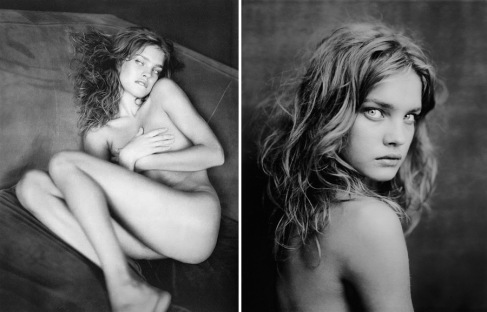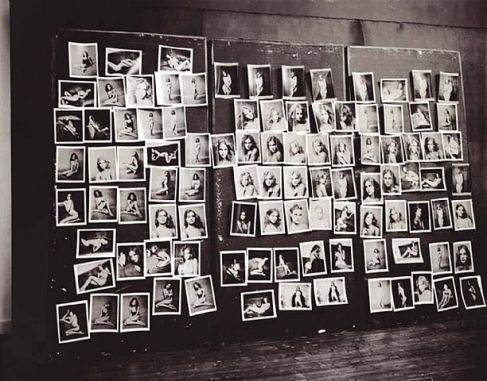1: Define what is meant by ‘visual eloquence’ in in the context of photography.
– Photographers strive to find moments of visual eloquence that will make the stories they tell unforgettable, to change the world we live in by taking pictures that can make a difference. Also showing the unseen and unknown but also creating powerful images.
2: What is the difference between news photography, photojournalism and documentary photography?
– Photojournalism is a mix of journalism and photography; they use their images so report events or multiple images to show a sequence of events. Usually funded my magazines for a contemporary audience.
– Documentary photography is creating images for posterity and then later shown in books and exhibitions.
3: “The job of a news photographer is to capture the essence of a whole story in a single image – a moment of truth giving the sensation of what it was like to be present” (Ingle dew, 2005:72) Find an example of this and discuss.
– I chose the image that Nick Ut took in 1972 of a girl running towards him who had been burn by the Napalm attack. It’s said that this image helped end the war. I think this image is really shocking as you feel their pain but also think why didn’t he help the children. I think this image sums up war as a whole, showing innocent children being physically and mentally damaged by some ones choices.
– I then chose another image, which I felt showed a whole story, Carter’s image of a girl dying with a vulture waiting for her to die. Both of these images are extremely shocking but also show a hard-hitting truth, which people try and cover up!


4: What is your opinion of the use of the ‘falling man’ image by Richard Drew?
– The falling man is a very powerful image and is really shocking. It shows the man falling to his death but also produces many questions, like did he jump? Was he pushed? Richard drew also tried to find the mans family and identify him which causes a lot of controversy and anger in America. I think this image will always be remembered when people think of 9/11. In the description it says he is falling but looks relaxed and just taking in his last few moments. I think that shows a lot about the man.
5: What are the similarities and differences in News
Photography between the present day and 100 years ago?
THEN
– When photojournalism first started, they used half tone printing, which is still used today. This was a breakthrough for the newspapers and they could finally print their images. First published by the New York daily graphic in 1880.
– News agencies started in the 1900’s, which made it easier for papers, as they didn’t have to employ photographers they brought images from freelancers who followed all the big events. Newspapers still use this today and its financially better and easier.
– Tabloids then started, creating big images and short headlines to draw people in. tabloids were the first to report events and showed a lot of shocking images, they wanted to prove they could print the photos first. I think the current tabloids still do this, it shows completion between each paper, with the 10pm deadline they can find current stories all day.
– Scoop images then started in the 20’s and 30’s, these were images that were taken in secret but sold for a huge fee. This isn’t used so much now as we have created laws around the scoop. (PCC)
– When the 35mm film camera was created it gave journalist more flexibility and could walk around and find events.
– Wire photos created a breakthrough as they could be sent anywhere.
– Before the press would create more shocking images then now as there were no laws on privacy etc., for example 9/11 created some shocking images on the papers.
NOW
– They now employ a small number of staff photographers to cover major stories, they still use news agencies to get images from different countries, although sometimes we get small stories emphasizes as they need to make money back from sending a team to a country.
– All the images are now digital but also we get shoots created for the newspapers. They use the latest soft and hardware.
– Photographers can now digitally send their images, meaning the papers can produce stories for the next day very quickly, meaning we get the latest news fast.
6: What is Magnum and why did it have such a big impact on photojournalism?
– A legendary independent photo agency formed to protect the integrity of photojournalists work. Had four founders, including Cartier Bresson. They wanted to protect journalist’s images and copyright them. Before magnum an image could be used by anyone and considered to be the publics. Whereas magnum changed this and now they must get permission.
7: What were the FSA and Mass observation – why were they so important and crucial to the development in photography?
– The FSA was an American project that employed five photographers to take images of the poor at the height of the catastrophic drought in 1929. It lasted five years, and wanted to open the eyes of Americans, to make them see what was happening else where in their country.
– The mass observation was a British project from 1936 to 1947. Included 1500 observers sent around Britain to document everyday life.
8: What did Martin Parr photograph and why was his work so controversial, especially to the members of magnum?
– Martin Parr photographed British people, but making them very stereotypical. He joined the magnum just, by one vote, he is said to be magnums biggest current earner. He showed Britain in a very vibrant way.
9: Different photographers are listed or mentioned in the text. Pick 2 photographers, research into and compare/contrast their particular style and subject.
The first artist I chose was Cartier Bresson. He lived from 1908 to 2004 also a French photographer. He was considered the father of photojournalism, using a 35mm film camera. He liked the mobility of the 35mm camera and took a lot of street photography images.
– “I prowled the streets all day, feeling very strung-up and ready to pounce, ready to ‘trap’ life
– Cartier Bresson was also part of Magnum, a group that was created to protect photographer’s images.
– He won the Grand Prix National de la photography in 1981, but also the Hasselblad award in 1982
The second artist I chose was Kevin Carter. He lived from 1960 to 1994. He is most known for his vulture image, of a girl dying with a vulture waiting behind her.
– He won a Pulitzer Prize. He was a South African photojournalist and a member of the bang -bang club.
– He committed suicide in 1994 at the age of 33 after taking the vulture image.
– He wasn’t allowed to touch the children due to the transmitting diseases, which means he couldn’t help them.
– I am depressed … without phone … money for rent … money for child support … money for debts … money!!! … I am haunted by the vivid memories of killings and corpses and anger and pain … of starving or wounded children, of trigger-happy madmen, often police, of killer executioners … I have gone to join Ken if I am that lucky
I chose these two artists as I feel they are completely different to one another as Cartier Bresson was a street photographer who photographed every day life in france, where the people where all the same class as him, but Carter took every day life to the extreme, he chose 3rd world countries where poverty was high. He showed a world we didn’t want to admit was real.
Both photographers were different but Cartier Bresson was more famous for his images even though I feel they are good but not hard hitting, where as Carters images could help the world but yet his weren’t as famous.

Kevin Carter’s image

Cartier Bresson’s images









